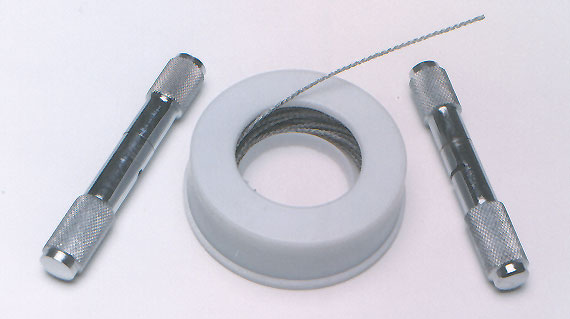The fighting teeth are very sharp, dagger-like teeth, on the upper and lower jaw, developed by the male llama upon maturity. They are dangerous to all those around him, including humans. Both geldings and intact males will develop these teeth. They need to be removed at the gum line, which can be done by your veterinarian quite quickly using OB wire. The teeth may in time grow back, and the procedure needs to be repeated, so they should be checked for regrowth periodically. Occasionally, females will develop a significant set of fighting teeth that also should be cut, although this is not as common.
Male Ilamas have sharp-edged fighting teeth which may begin to erupt by two years of age. These teeth are along the side of the jaws about halfway back. There are two on the upper jaw and one on the lower jaw on each side of the mouth. Fighting teeth have very sharp points and cutting edges front and back and are curved like a crooked finger. Some Ilama owners choose to have tooth cut by their vet, but many feel that the procedure is simple enough to be considered a routine part of their herd management.
Cutting Fighting Teeth
The most commonly used technique for removal of fighting teeth is to cut them off at the gumline using a flexible braided cutting wire known as obstetrical or OB wire, available from your veterinarian and livestock supply stores. Special metal handles are available for gripping the ends of the OB wire, and if these are used a 24″ length of wire is adequate.
Restrain the animal in a chute. A large diameter lead rope can be inserted across the lower jaw to help to keep the mouth open while cutting the teeth.
Carefully retract the lips on one side and hook the wire behind the forward upper fang. The fighting teeth are slightly curved backward, so the wire will find its proper position at the gum line as you pull the ends of the wire forward. The OB wire is designed to cut only hard tissues like bone or tooth without cutting soft tissue, so once the wire is in place the animal may be allowed to close his lips around it.
Both ends of the wire should be directed forward out of the mouth, one end held in each hand. Draw the wire across the tooth by pulling first with one hand and then the other at a rate of about one stroke per second while maintaining a firm pull on the wire. Usually the fang will be cut off neatly at the gumline in about 15-20 seconds. There may be a little bleeding from abrasion of the gums, but this is no problem. Any sharp edges or points which remain can be smoothed with an ordinary metal file. Make sure that the sharp, severed crown of the tooth is out of the animal’s mouth before going on to the single lower fang on the same side, and then the rear upper fang. Repeat the process on the opposite side. After one use the wire will coil when tension is released. This makes placement on subsequent teeth a bit more difficult, but the same piece of wire can be used on all six teeth and even reused on additional animals if disinfected in Betadine solution prior to re-use.
Fighting teeth can be cut off as soon as they have erupted even 1/4″ and this is sound management policy. The teeth will continue to erupt until the animal is 4-5 years old, so put a reminder in your files to check the teeth of your males every 6 months and redo the procedure if necessary. Female Ilamas can get small fighting teeth. These erupt much later and usually are not removed.


